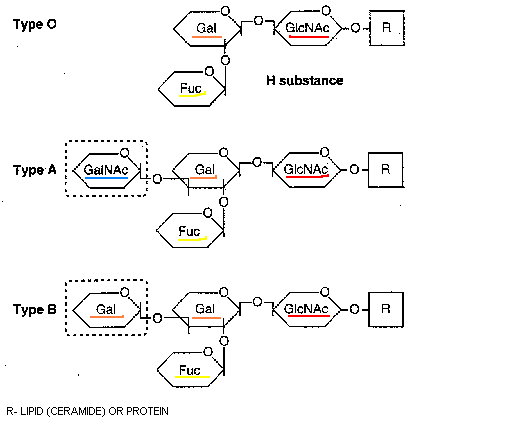The surface carbohydrates on a cell serve as points of attachment for other cells, infectious bacteria and viruses, toxins, hormones, and many other molecules. This ability depends on the presence of these sugars, their accessibility and their mode of presentation. The carbohydrates are recognized by the cell adhesion molecules which are glycoproteins expressed on the cell surface.
Several viruses, bacteria and parasites have exploited the presence of cell surface oligosaccharides using them to enter into the cells.
For example :
Bacteria adhere to tissues selectively due to their fimbriae ( containing lectins) which bind exclusively to certain surfece carbohydrates. These interactions determine which tissues are susceptible for the invasion (for example E.coli causes urinary tract infections while Streptococci of A group colonize upper respiratory tract and skin ).
Carbohydrates can be strong antigens which may trigger harmful immune reactions.

Adhesion molecules are important for reproduction. Binding of the sperm cell to the egg is mediated by glycoproteins serving as receptors on the surface of each two membranes. Glycoproteins surrounding the egg (forming zona pellucida) prevent the polyspermy. Adhesion carbohydrates are also essential for embryonic development. As the fertilized egg divides, the carbohydrates on resulting embryonic cells change in characteristic ways. For example a trisaccharide LeX appears at the 8 to 16 cell stage when the embryo compacts from a group of loose cells into a smooth ball. LeX trisaccharide plays an important role in compaction.
Cell - cell contacts mediated by glycoproteins play a role in growth control. For example contactinhibin (N-glycosylated protein) is responsible for density dependent inhibition of fibroblasts growth. Cells stop proliferation when contacts between them are close ; they form a monolayer. Contactinhibin is synthesized in highly sialylated, inactive form. After contacts between the cells are established, the glycoprotein is converted to low sialylated, biologically active form. It is placed in the plasma membrane and binds to a specific cell-surface receptor, CiR.
Go to :